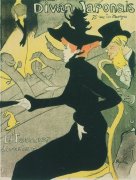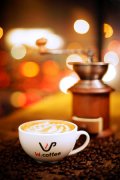Wake up the coffee beans.
If I don't touch what I'm interested in, I definitely fall into it, and I have to get to the bottom of it. Take coffee, for example, although it has been drunk for 20 or 30 years, most of it is instant three-in-one, mainly refreshing, strong enough, never paying attention to flavor, and sometimes two packets of powder to a portion of water is double.
About ten years ago, a friend gave me a filter pot with a small cloth bag, and it happened that another person sent another bag of coffee powder from Central and South America, so I tried it at home. Put the conical pocket on the small pot, pour in the coffee powder, sprinkle it slowly and evenly with hot water, thoroughly soak the coffee powder, drop it and you are done. I have tasted a lot of fine products while traveling all over the world, but I have never had a decent drink at home. It was that cup of coffee that greatly changed my mind. It turned out that it was easy to drink high-quality coffee at home, which was no less than that made in a cafe. I decided not to buy instant coffee anymore. Unexpectedly, it was made the same way the next day, but the entrance was disappointed, and the fragrance and sweetness was lost, leaving only bitterness.
What on earth is going on? The amount of coffee powder and water are the same, and so is the water temperature. Why is the result so different? Take a closer look at the packaging. I haven't seen the label before. it's a century-old store in Guatemala, and the one-year taste period just ends at that month. After thinking about it, there is only one possibility. The first cup, such as new, is equivalent to coffee beans being ground and brewed immediately after baking, and coffee is still alive, while the remaining coffee powder is unsealed in a vacuum package and loses its vitality soon after exposure to air.
Thinking about the feeling of the first cup, I began to study carefully and bought all the coffee books I could find at that time. There are only four books in total, all of which are good, which is not like at least hundreds of copies on the market now, which is a waste of other people's time. After reading the book, I learned that the basic condition for making good coffee is that the coffee beans must be fresh. What is fresh? The raw beans can be preserved for two years, and the baked ones should be used up within a week, and once ground into powder, they should be brewed in five minutes and eaten immediately. This is the definition of making boutique coffee by coffee experts. Although so many coffee beans are produced around the world, these authoritative tongues believe that there are only two kinds of coffee, boutique and non-boutique.
So, if you want to drink good coffee at home every day, you have to bake it yourself. I started looking for raw bean importers and toasters, and even paid tuition for a week-long coffee brewing class. In this way, I got to know the yellow Chongqing, which has been importing raw beans and baking since 1977. Interestingly, although he has worked for such a long time, he has never read a book on coffee, and I have no practical experience in all aspects. Because of this, we have a lot of chat. Every time I went to work with him in the baking room, I was surprised to combine the process I saw on the spot with the knowledge in the book. Whenever other customers came to the door, he would tell them how good I was at coffee. In fact, I was just getting started.
Having the courage to try, I bought all kinds of coffee beans from east to west, and tried light roasting, medium roasting, deep roasting and re-roasting at home. A total of four kinds of bean dryers have been used, and finally I have come up with a particularly satisfying and non-greasy formula. This is our Nguyen coffee, which is appreciated by all the friends who have drunk it.
On average, I go to Boss Huang to replenish the goods every two months. every time he soaks several cups of newly discovered varieties for me to drink on the spot, mostly pure coffee, and before leaving, he gives me two bags of his private beans, sometimes the finest Hawaiian kona and sometimes the civet. When I went there two days ago, I asked a question I had never asked before: "what is your favorite temperature when baking coffee?" He laughed: "I like to use 168 now, which means all the way."
It turned out that many people who studied baking with him could not grasp the relationship between temperature and time. Therefore, he simply helped them set a memorable data. In fact, good beans can be baked from 120 to 200 degrees Celsius. The point is that the temperature is different, and the time must be adjusted accordingly. When baking beans, you must be very focused and distracted for a moment, otherwise it will be easy to fail.
So gentle, so wholehearted. It turns out that good baking is to awaken the life of coffee beans!
Important Notice :
前街咖啡 FrontStreet Coffee has moved to new addredd:
FrontStreet Coffee Address: 315,Donghua East Road,GuangZhou
Tel:020 38364473
- Prev

Japanese Cafe
Japanese Cafe lithographic poster Edward Funier Japan Cafe is a song and dance nightclub in Montmartre where Parisian artists gather. In 1893, the place was redecorated and incorporated into the very fashionable Japanese style and lanterns of the time. In order to attract customers to attend the opening ceremony of the nightclub, cafe owner Edward Funier customized it from Lautrek.
- Next

Meet the coffee shop with log texture at the corner of the subway entrance
In the noisy subway Shipai Bridge B corner, a large floor-to-ceiling glass door, coupled with the warm lights upstairs, inadvertently attracted the hasty footsteps of the past. In this Korean coffee shop called W.COFFEE, there is a more fascinating natural scenery, and the classic drinks and delicacies from Gwangju, South Korea, created by handsome Korean men are also quite attractive. Walk into W
Related
- How did the Salvadoran coffee industry develop in Central America?
- What exactly does the golden cup extraction of coffee mean?
- The Origin of Coffee flower
- [2023 Starbucks World Earth Day] there are more meaningful things besides free Starbucks coffee!
- What kind of coffee is there in Spain? 9 Flavors of Spanish Coffee
- Aromatic African coffee| Kenya's coffee culture and historical production area
- Liberica Coffee Bean knowledge: the characteristics of Liberian Coffee beans of the three original species of Coffee beans
- The origin and formula of Spanish latte introduces the taste characteristics of Bombon coffee in Valencia, Spain.
- How to adjust the solution of over-extracted coffee
- What is the tasting period of coffee beans? What is the period of coffee and beans? How should coffee wake up and raise beans?

